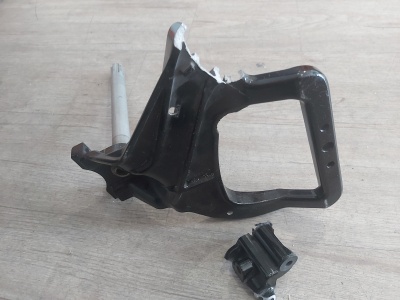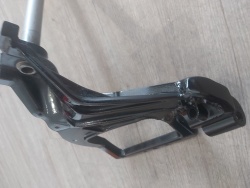-
Assessment of Damage: Initially, a thorough examination of the tiller arm is necessary to understand the extent of the damage. This helps in planning the repair process effectively.
-
Grinding and Cleaning: The damaged area is ground out to remove any fractured metal and to create a clean, fresh surface for welding. This step is crucial for ensuring that the welding adheres properly. Along with grinding, all paint and corrosion around the damaged area are removed to ensure a clean metal surface.
-
Welding Process: The tiller arm is then carefully welded back together. This requires precision and skill, especially given the nature of the material (typically aluminum for these tiller arms). The welding must be strong enough to withstand the operational stresses.
-
Reinforcement: To reinforce the repaired area and provide additional strength, a piece of 6005 T5 6mm aluminium is incorporated. This step is essential to ensure that the tiller arm can withstand the high-stress conditions of racing or patrolling without failing again.
-
Finishing: After the welding and reinforcement are completed, the area is typically ground smooth, and any necessary finishing touches are applied. This might include repainting the tiller arm to protect it from corrosion and to match the original look.
-
Quality Check and Testing: Finally, a thorough inspection and testing of the repaired tiller arm are necessary to ensure that the repair is successful and the arm is safe to use.
SLSA IRB Mercury 25HP strength modification/repair
SLSA 25HP mercury race/patrol modification/repair
CODE: AP-SLS-MCR25
Category:
Minimum Order:
1
First Price Break:
10


